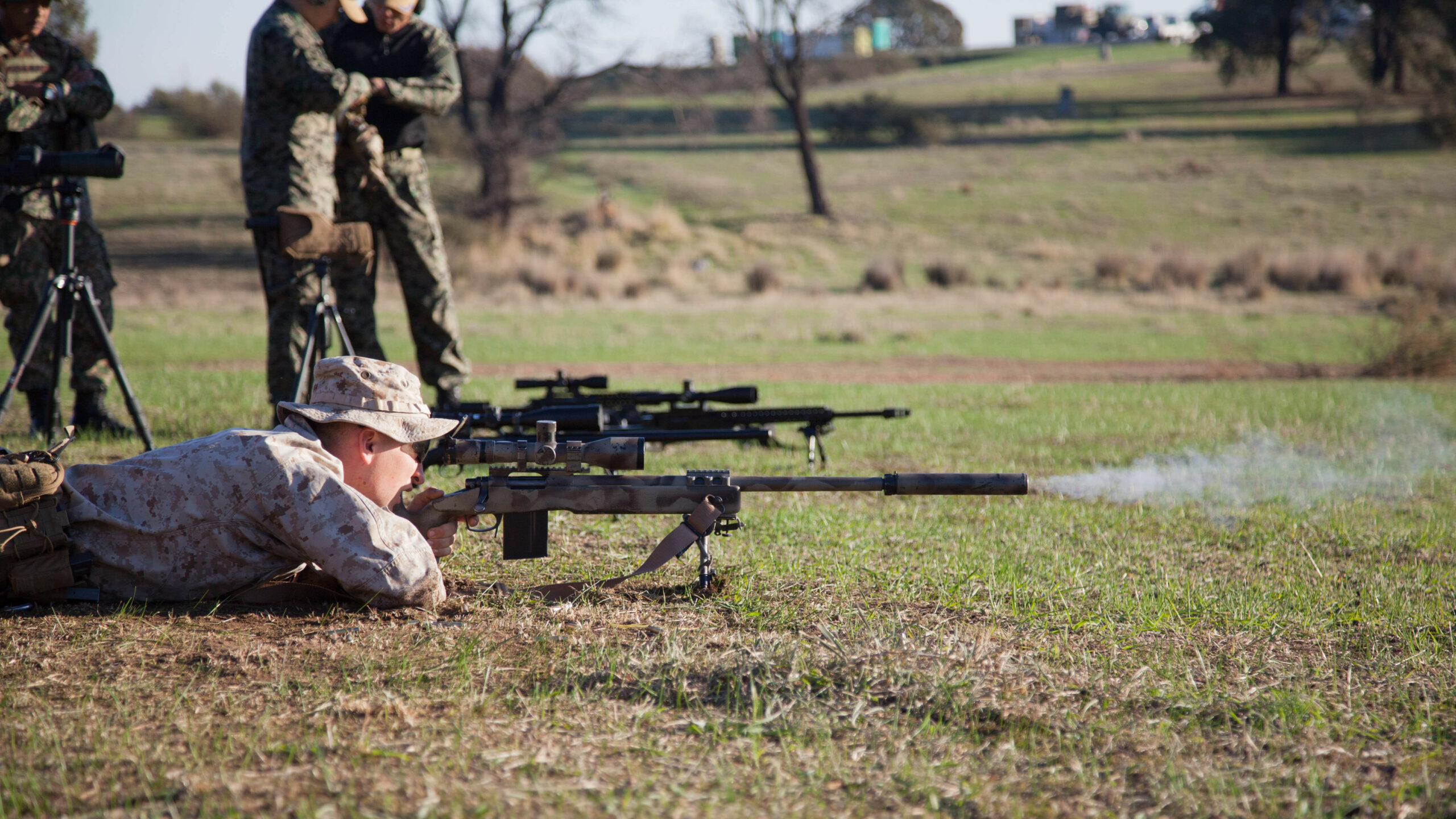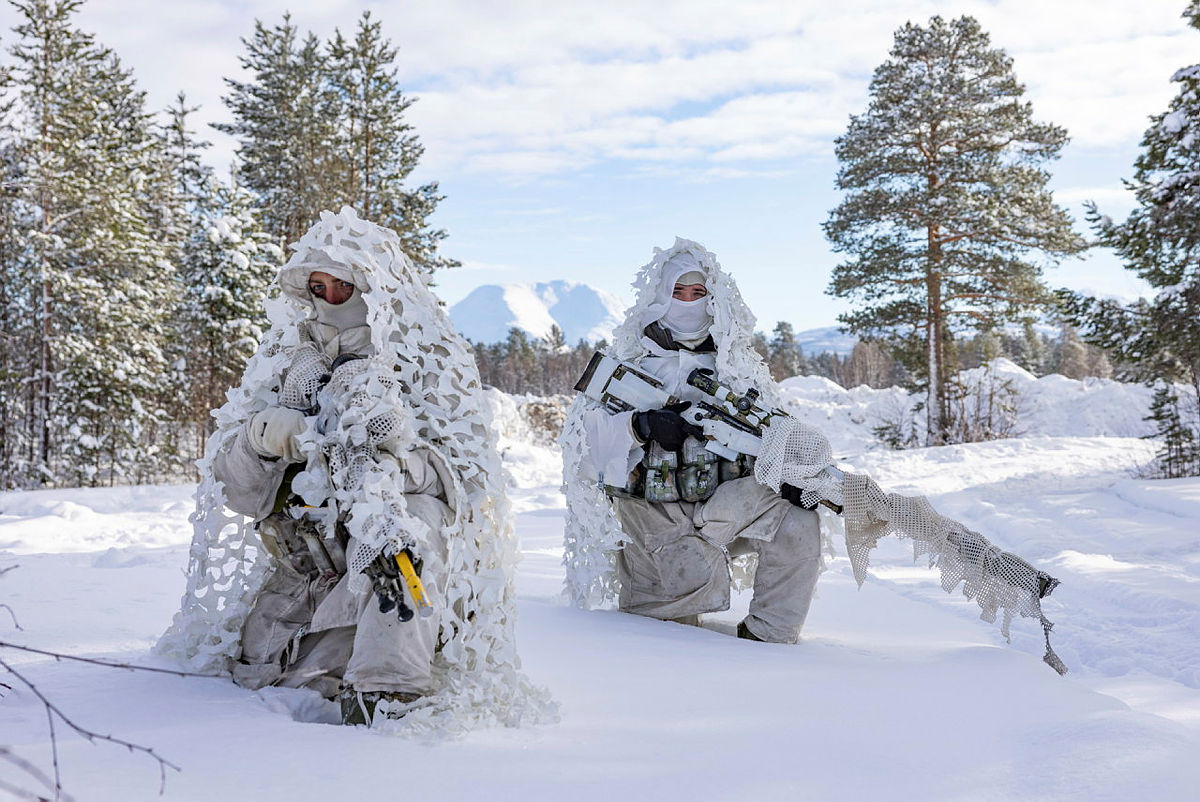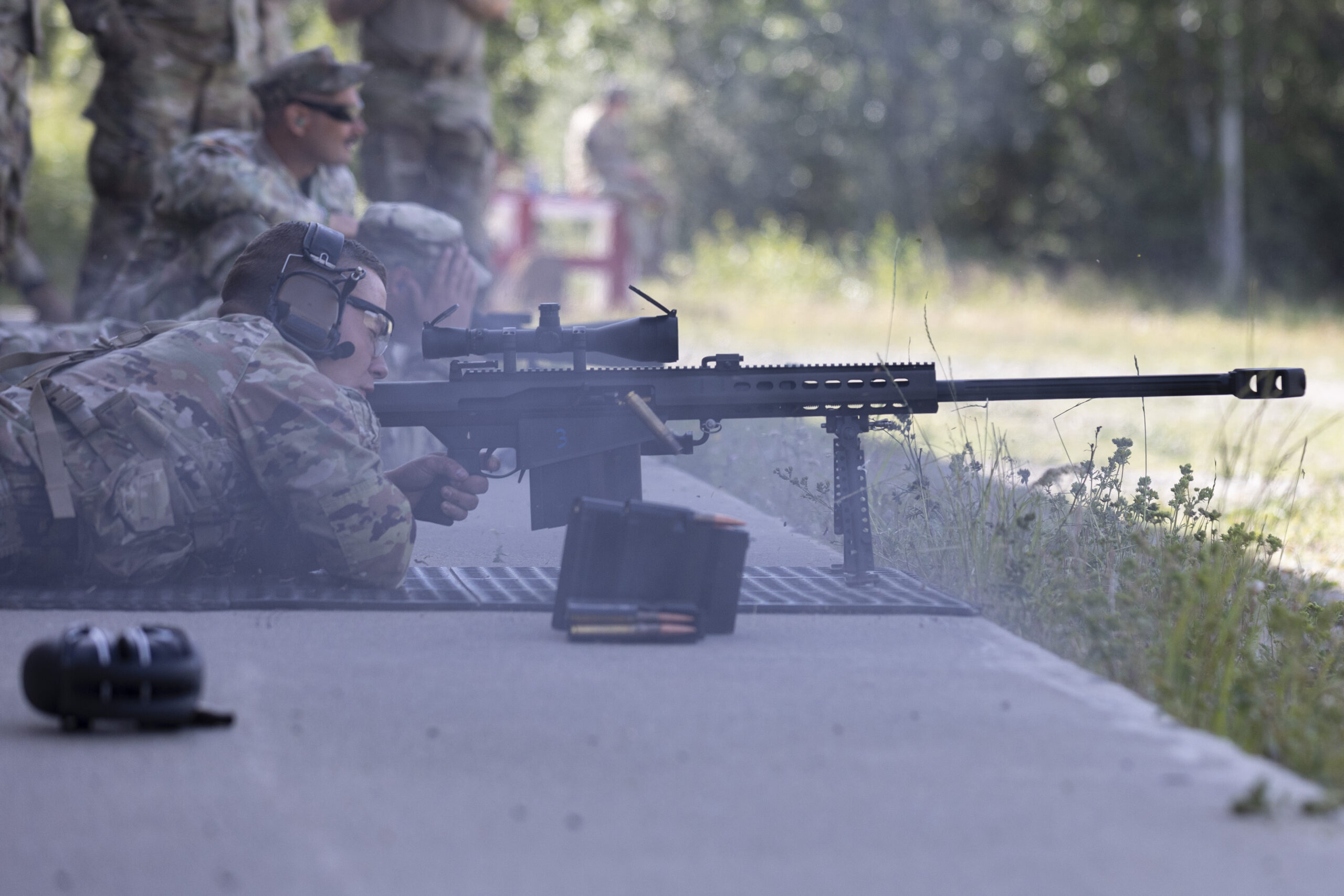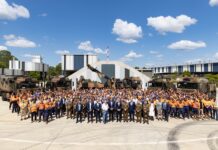Sniping was once a much less complicated undertaking than it is today. The reason lies in the expansion of the performance of sniper rifles and supporting optics to previously unachievable levels. In turn, this has seen the sniper’s mission evolve significantly and, in parallel, a growth in understanding of the operational advantages that a high-quality sniping capability brings in terms of detecting, engaging and neutralising targets. Beyond that, sniping has also evolved to become a high-value reconnaissance asset for ground commanders.
Before discussing what sniping entails today and the tools necessary for its success, it is necessary to provide some brief background on the modern sniping environment and how it has evolved. Sniping used to be all about the operator, the weapon, the optic and the associated ammunition. As marksmanship was considered a central element in training soldiers, this provided an ideal structure to identify those with the potential to become a sniper. This group would then be given more specialist training and after selection, you would have the basis of a sniper.
This leads to the choice of weapon for the sniper and for a considerable period this was really not a sophisticated process. During manufacture of the standard service rifle, for many years a bolt-action weapon was used, the best and most accurate examples were identified and put to one side for sniper use. At that point, a scope mounting point and scope were added. Then, match-grade or other high-quality ammunition was provided, and your sniper capability was ready to go.
Evolutionary Path
This was certainly the British Army approach, but when the 7.62 × 51 mm became the standard NATO round they decided to modify their existing No.4 Mk.1 (T) and Mo.4 Mk.1* (T) sniper rifles from 7.7 × 56 mmR to accommodate the new NATO round and then added other modifications to create the L42A1 sniper rifle. By contrast, the US Army decided to create a sniper system based on their then new 7.62 × 51 mm M14 battle rifle. Outstandingly accurate M14s were identified in manufacture to provide the basis for the M21 sniper rifle; they were converted to semi-automatic operation, their furniture was modified, scope mounts attached, and a scope fitted.
The US Marine Corps (USMC) took a different approach to meeting its sniper rifle needs, selecting the Remington M700 bolt-action rifle as the basis for the M40 sniper rifle in 7.62 × 51 mm. The M700 is an evolution of Remington Model 721, which entered production after World War II. The rifle has a simplified action based on the Mauser design, not too different to the P14 rifle that Remington manufactured for Britain during World War I, which used what was essentially a copy of the Mauser action.
In the 1980s, the US Army selected the long-action version of the Remington M700 to replace its M21 sniper rifles. In Army service, the M700 was adopted as the M24 Sniper Weapon System. In 2010, the Army’s M24s were rebuilt as the M2010 Enhanced Sniper Rifle. The stocks were replaced by a new chassis system, and the weapons were re-chambered in .300 Winchester Magnum (7.62 × 67 mmB).

These were effective weapons, but in comparison to what can be achieved with modern sniper systems they were actually somewhat limited. When the British Army looked to replace the L42A1, the competitive evaluation for successor weapons was based on meeting the performance of the L42A1 as a baseline; this was an effective range of 600 m and harassing fire out to 800 m. Today, the Australian Army EF88 rifle in 5.56 × 45 mm, when fitted with a Raytheon Elcan Specter DR 1-4x optic, is so accurate the range qualification now goes out to 600 m with standard rounds. This shows the difference that a modern optic can make.
Using M118 special rounds, the US Army M21 had an effective range of 690 m, while the USMC M40 could reach 800 m with the M118. The selected successor to the British L42A1 was the Accuracy International (AI) Precision Marksman (PM) which received the L96A1 designation. Arguably the first of the truly modern sniper rifles, the L96A1 in 7.62 × 51 mm could effectively engage targets out to 900 m and provide harassing fire to 1,100 m.
At a certain point, there was a notable increase in demand for more performance and for enhanced on-target effects, which led to a jump in calibres on offer. Commercially there had always been a profusion of large-calibre rounds, with varying performance levels, such as for hunting large game. Then there was competitive shooting which also saw people experiment with new rifles and ammunition. Applying what was known in the commercial sector to the military marketplace would see a new category of sniper system emerge. In the lead was Barrett Firearms in the US with their idea to develop a 12.7 × 99 mm (.50 BMG) semi-automatic rifle for long-range engagements, anti-materiel and Explosive Ordnance Disposal (EOD) applications. By the end of the 1980s, they had a definitive design in the form of the M82, followed by the production M82A1 system.
The Swedish Army was one of the first operators to embrace this evolution of sniping capabilities when in 1989, they ordered around 100 M82A1 rifles from Barrett. Later, the Swedes looked to acquire a new sniper rifle in 7.62 × 51 mm, leading them to evaluate the British L96A1 from AI. The Swedish Army also asked AI to make changes to the rifle to meet the demands of their operational environment, which led to the development of the AI Arctic Warfare (AW) sniper rifle.
Sweden
The Swedish M82A1 order really started the wider adoption of 12.7 × 99 mm anti-materiel/sniper weapons systems. The USMC then adopted the M82A1, with the US Army and US Air Force following suit. Other manufacturers would also field 12.7 × 99 mm weapons; AI developed L121A1 (AW50) and later the AX50. Barrett would continue to develop a range of large-calibre solutions, including the McMillan TAC-50, Steyr, with its large-calibre system, as did PGM in France.
There were many others as well, and more exotic options became available in different calibres; Azerbaijan had the Istiglal system in 14.5 × 114 mm, the Soviet heavy machine gun and anti-tank rifle round. South Africa adopted the NTW-20 anti-materiel system in 20 × 83.5 mm, with a second variant of the weapon fielded in 14.5 × 114 mm. The 20 mm variant has a range in excess of 1,500 m, while the 14.5 mm version has a range of over 2,300 m.
Ammunition Developments
The arrival of the 12.7 × 99 mm weapon presented operators with a system that would have a range of 1,800 m or even further. As these weapons were acquired in large numbers, there were significant developments in terms of ammunition, and standard ball rounds were rapidly supplemented by more exotic natures. These ammunition developments are reflected by the wide range of 12.7 × 99 mm match grade ammunition offered by producers such as Nammo for anti-materiel/sniper applications.
Available ammunition in 12.7 × 99 mm calibre from Nammo includes ball, ball/tracer, ball round with marker/spotter function (flash) and ball round with IR tracer for night engagements. There is an armour-piercing incendiary (API) round that offers 22 mm of rolled homogenous armour equivalent (RHAe) penetration at 700 m for anti-materiel applications, and a range of multipurpose rounds. For example, the NM140F3 multipurpose round offers AP performance and fragmentation effects; there are also multifunction rounds with tracer and with IR tracer. Alongside these, reduced range rounds are available for training and operations where reduced performance is desirable.

Sniping continued to evolve as new ammunition calibres entered the fray, offering an expanded performance envelope. Most popular of the ‘new’ sniper rifle calibres is .338 Lapua Magnum (8.6 × 70 mm), while others chose a different path. For example Germany, which used the .300 Winchester Magnum (7.62 × 67 mmB) round, in addition to the .338 Norma Magnum (8.6 × 64 mm) and necked-down versions (to .300 calibre) of the Norma Magnum and Lapua Magnum rounds are available. It should be noted that the baseline for the .338 Lapua Magnum was apparently the .416 Rigby round developed for hunting in 1911.
Depending on preference, there are a vast number of hunting rounds and rounds designed for long-range competition shooting that could be considered for sniping applications. Operators in military, paramilitary and police special units can often use these rounds to create bespoke sniping solutions, having specialist ammunition produced in limited runs, new barrels can be produced in the desired calibre, and both integrated with the chassis of a sniping system.
Exploiting Performance
Earlier in this article, we referred to the British Army replacement of the L42A1 sniper rifle with the L96A1, describing the latter as the first truly modern sniper rifle. The L42A1 could effectively engage targets out to 600 m, whereas the L96A1 could effectively engage out to 900 m. The arrival of new larger-calibre weapons and improved ammunition types led to a dramatic increase in the operational performance of sniper weapons.
The South African NTW-20 certainly fitted the bill for anti-materiel applications, even though its 20 × 83.5 mm round was originally developed in Germany in the 1930s for the MG 151 aircraft cannon. The other variant of the system, the NTW-14.5, in 14.5 × 114 mm appeared to be a far more flexible weapon system – it was an anti-materiel system, but also a classic sniper system. In August 2013, a South African sniper attached to the UN mission in the Democratic Republic of the Congo, neutralised a target at a range of 2,125 m with an NTW-14.5.
In Iraq and Afghanistan, the Barrett M82A1 certainly proved itself; in Iraq in October 2004, a US sniper carried out a successful engagement at 2,300 m, while an Australian sniper successfully engaged a target at 2,815 m in April 2012 in Afghanistan. The McMillan TAC-50 in 12.7 × 99 mm has also demonstrated exceptional performance in the sniping role for the Canadian Forces; in March 2002 in Afghanistan, Canadian snipers successfully engaged targets at 2,310 m and 2,430 m. In May 2017 in Afghanistan, a Canadian sniper neutralised a target at a range of 3,540 m with a TAC-50. More recently, in November 2022, a Ukrainian sniper using an indigenous XADO Snipex Alligator rifle in 14.5 × 114 mm was successful at a range of 2,710 m.

Long-range engagements are not confined to large-calibre sniper weapons, as proven by a British Army sniper in Musa Qala, Afghanistan in November 2009. Utilising an AI L115A3 sniper rifle in .338 Lapua Magnum, with a Schmidt & Bender 5-25×56 scope, a successful engagement was recorded at a range of 2,475 m. The L115A3 can also deliver long-range engagement capabilities at night or in limited visibility conditions, as its scope can be integrated with both image intensification and thermal systems. British snipers operate in two-person teams, with spotting scopes, laser rangefinders and other systems to enhance target acquisition and engagement among the equipment they carry.
Performance Growth
Listing these successful extended-range engagements illustrates how the performance envelope of sniper systems has grown in recent years. Sniper systems have grown in flexibility as well, and this is evidenced by Tranche 1 of Australian Defence Force (ADF) LAND 159 Lethality Systems Project to acquire new small arms. As a part of this project, there was the new ADF Sniper System, which called for the acquisition of a medium-range and long-range anti-personnel sniper capability, as well as an anti-materiel sniper capability. The latter requirement was to replace the Barrett M82A2 and this saw the Barrett M107A1, in 12.7 × 99 mm, selected.
To meet the other sniper requirements, the ADF took advantage of a new trend in sniper rifle design, with the rifle capable of being converted between different calibres. This saw the selection of the AI AX-SR, with the weapon capable of switching between 7.62 × 51 mm, .338 Norma Magnum (8.6 × 64 mm) and .338 Lapua Magnum (8.6 × 70 mm). This solution supports mission flexibility, as well as allowing live-fire training with the most cost-effective calibre.
Other areas where the flexibility of sniper systems has been enhanced is in the realm of sighting systems. Optical performance has grown exponentially, with systems offering obvious operational advantages; it also means that more people can meet basic sniper qualification criteria. There is much more to sniping than being the best shot, as a sniper has to be extremely tactically astute to get into position to engage a target and then move to a new location after engagement. A sniper is also a high-value reconnaissance and intelligence asset, as one can see far more through a sniper optic and when moving through terrain, knowing what information is important and passing it up the chain of command is also important to the mission.
Technology will add more possibilities to support and enhance sniping capabilities. As previously noted, sniper scopes are being integrated with image intensification and thermal sights, laser rangefinders are used, as are meteorological sensors, often with ballistic calculators included. British sniper teams use the Leupold Mark 4 12-40×60 mm tactical spotting scope and a handheld thermal surveillance sight.

Potentially though, the future could see the integration of the sniper rifle with a digital fire control system. The next-generation US Army rifle, the XM7 (previously known as the XM5), and the XM250 automatic rifle, essentially a squad support weapon, will come equipped with the Vortex Optics XM157 fire control system (FCS) that has an optic, a laser rangefinder, visible and infrared aiming lasers, ballistic calculator, meteorological sensor suite and a digital display overlay.
Raytheon Elcan in Canada has also developed a digital fire control system in the Specter Digital Fire Control Sight (DFCS), and a number of NATO member countries’ ground forces have expressed an interest in evaluating the system.
Logically, the future for sniping will see the rifle integrated with a complete FCS solution. The technology to achieve such a solution is already mostly available; all that remains is the integration task to deliver an FCS solution that is sniper-centric.
David Saw




